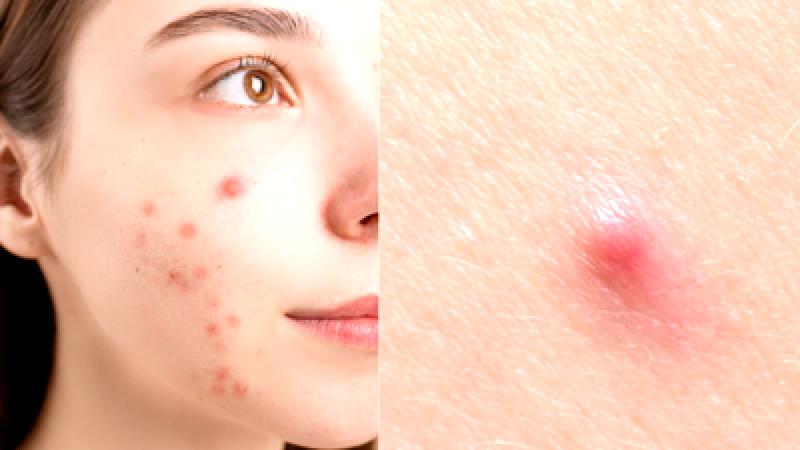
Acne and pimples are often confused as interchangeable terms, yet there are distinct differences between them. Acne is a persistent skin condition marked by the recurring presence of red, inflamed pimples on the skin's surface, ranging from mild whiteheads to severe cysts, which may result in lasting scars. On the other hand, pimples are a symptom of acne and can emerge across various body areas like the face, back, chest, and shoulders.
The root cause of acne lies in the pores becoming blocked due to an accumulation of excess sebum, dead skin cells, and pollutants. This blockage leads to inflammation, redness, and the formation of pimples. Acne can develop at any age and on different body parts, not solely limited to the face. Factors triggering this process include hormonal changes, excess sebum production, clogged pores, bacterial growth, and inflammation from skin care products or environmental elements.
There are different types of pimples, each with unique characteristics, such as whiteheads (fully blocked pores), blackheads (partially blocked pores), cysts (painful, scar-inducing bumps), and nodules (hard, long-lasting bumps).Types of Pimples: - Papules: Small, pink bumps that may be sensitive to touch - Pustules: Painful, inflamed bumps filled with pus - Comedones: Small, flesh-colored bumps that can be open (blackheads) or closed (whiteheads)The Causes of Pimples: Hormonal Changes, Excess Sebum, and Sensitive SkinPimples can be triggered by hormonal shifts, excess sebum production, and certain skin types. Here's how each factor plays a role:- Hormonal changes: Acne can be influenced by fluctuations in estrogen and testosterone, especially during puberty, menstruation, pregnancy, or menopause- Excess sebum production: Genetics, stress, or specific medications can promote the overproduction of sebum, leading to pore blockage and inflammation- Sensitive skin types: Oily or dry skin can heighten the likelihood of developing pimples due to potential pore blockages or skin irritationOvercoming Acne and Pimples: Establishing a Skincare Regimen for Healthy SkinMaintaining a consistent skincare routine is essential for managing acne and pimples. Here are some recommendations to promote healthy, glowing skin:- Utilize a mild, oil-free facial cleanser containing salicylic acid, glycolic acid, or benzoyl peroxide- Regularly exfoliate to eliminate dead skin cells and unclog pores- Opt for non-comedogenic products to prevent pore congestion- Refrain from picking or popping pimples to avoid scarring and infections- Keep your hands away from your face to prevent the transfer of oils and bacteria- Stay hydrated and follow a balanced diet to support skin wellnessBy comprehending the origins and varieties of pimples and adhering to a regular skincare regimen, you can diminish the visibility of acne and pimples, ultimately achieving clear, radiant skin. A 7-day diet plan enriched with collagen for a glowing complexion.











